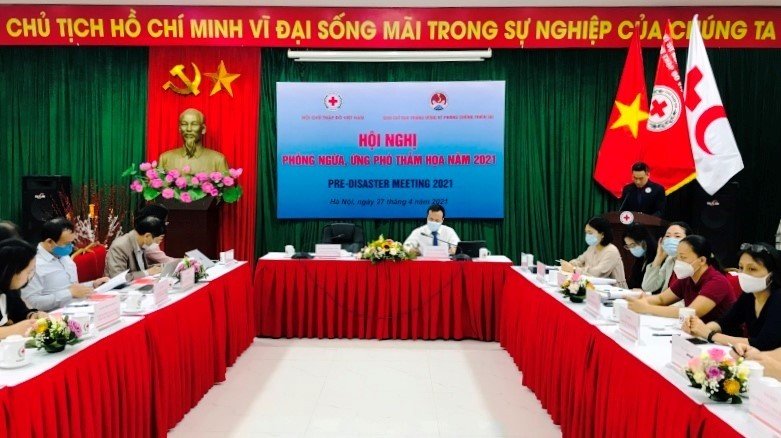The conference is an opportunity for the VNRC and delegates to review and share experiences, good programmes, models, and the coordination on natural disaster and disease prevention and control in 2020.
In 2020, natural disasters occurred at a large scale with many types, especially heavy rains and floods in the central region, causing serious damage. At the same time, the Covid-19 epidemic broke out in many localities in the country, seriously affecting all aspects of people's lives.
In order to promptly support people in the central region affected by floods, the VNRC Central Committee mobilized organisations, businesses and individuals to donate money and commodities.
In addition to controlling natural disasters, in the face of the complicated development of the Covid-19 pandemic, the VNRC has promoted communication on disease prevention and control, providing equipment (masks, clothing for preventing epidemics, soap, antiseptic solution) to the people, the anti-epidemic front line and people in other countries affected by the Covid-19 epidemic.
The total value of support given in relation to natural disasters, catastrophes and the Covid-19 pandemic in 2020 reached nearly VND 800 billion, providing assistance to more than 1.1 million people.
In order to be ready to prevent and control natural disasters and epidemics, especially the Covid-19 pandemic in 2021, the VNRC has proactively developed a natural disaster prevention plan and directed the whole system to prepare backup resources, diversifying its relief goods to timely support people in emergency situations; applying information technology to its emergency response; implementing the Forecast-based Financing (FbF) model for hot weather and building a similar model for storms and floods; building logistical supply chains to ensure timely and effective responses and deploying synchronous communication activities from central to local level.
















